#founding member of the Bronze Ladies of Chicago
Text
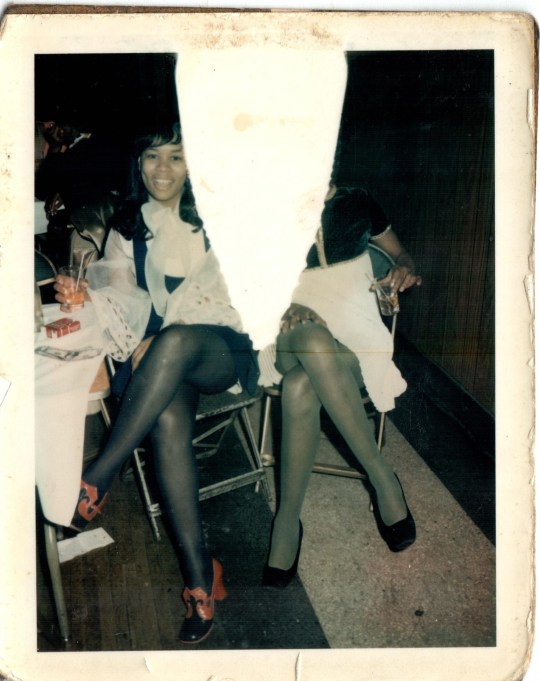
Annette Hardy (left) with a loved 1
Born September 13th 1950 in Laurel, Mississippi
Bloomington, Illinois
#Annette Hardy#Laurel#Mississippi#Chicago#Bloomington#Illinois#mother#wife#beloved aunt and sister#founding member of the Bronze Ladies of Chicago#hearing officer#may she rest in peace#<3
13 notes
·
View notes
Text
TRAINSPOTTING!
Lucy and Railway Transportation
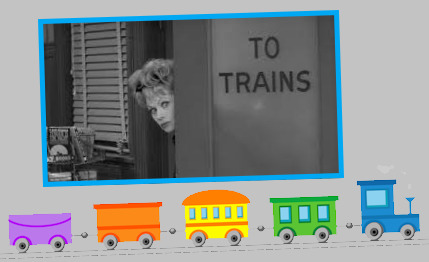
Before America was ruled by the automobile, train transportation was the way to go. Lucy makes tracks for the railroad in these unforgettable moments on the (laugh) tracks.

As a young girl, Lucy would take the train from Jamestown to New York City, hoping to fulfill her dreams of becoming a performer. The train station is now part of the National Comedy Museum.
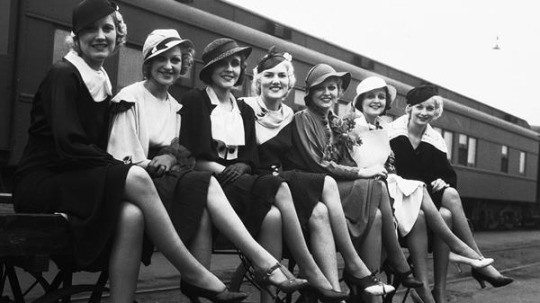
1933 ~ Lucille Ball joined the Goldwyn Girls on a train headed west to Tinseltown. Left to right are Katherine Mauk,Rosalie Fromson, Mary Lange, Vivian Keefer, Barbara Pepper, Theo Phane, and Lucille Ball.
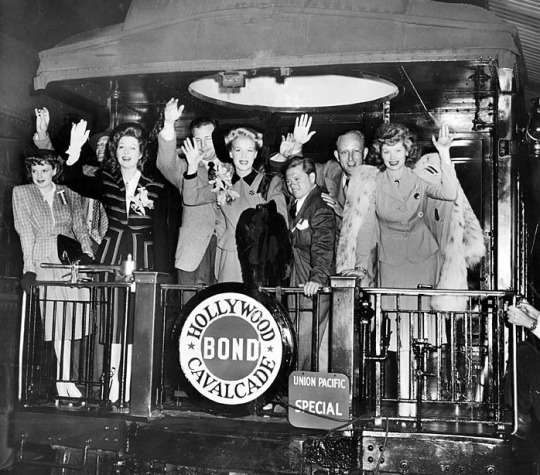
1943 ~ Lucille Ball and other well-known stars set out on a Union Pacific special train to cross America promoting the sale of War Bonds. It began in Washington DC and went through 16 American cities before ending in San Francisco 21 days later.

Fancy Pants (1950) ~ Lucille Ball and Bob Hope pose atop a railroad handcar.
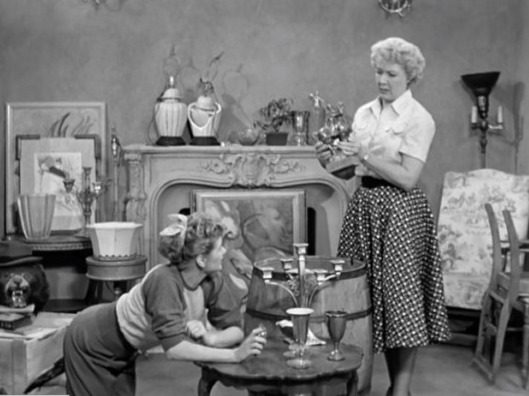
“New Neighbors” (1952) ~ When Ethel is looking through the O’Brien’s belongings, she holds up a bronze of a man on horseback. She deems it “early Pullman.” Pullman refers to railroad sleeping cars that were built and operated by the Pullman Company from 1867 to 1968. The cars were often decorated with inexpensive items that sometimes found their way into travelers’ suitcases!
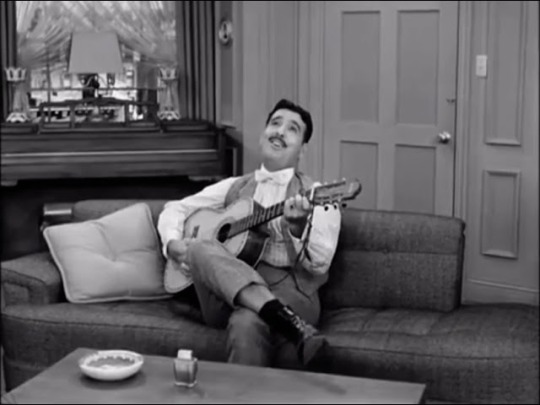
“Tennessee Ernie Visits” & “Tennessee Ernie Hangs On” (1954) ~ Ford sings the train-themed song "The Wabash Cannonball” waking Lucy and Ricky from a sound sleep, and then again just before Lucy enters as the 'wicked city woman.' The song’s first documented appearance was on sheet music published in 1882, titled “The Great Rock Island Route” and credited to J.A. Roff. A revised version was made famous by Roy Acuff in 1936.
Listen to the jingle, the rumble and the roar
As she glides along the woodland o'er the hills and by the shore.
Hear the mighty rush of the engine hear the lonesome hobo's call
As you travel across the country on the Wabash Cannonball.

“Getting Ready” (1954) ~ Thinking about how to get to Hollywood, Lucy considers the train. The brochure Lucy reads has the Union Pacific Railroad’s logo redacted. In reality, the Union Pacific did not operate East of the Mississippi, betraying the show’s Southern California roots!
LUCY (to Ricky): You know, on the train, you can see the country you're passing through. This is little Ricky's first chance to go across the United States, so don't you think you ought to get a chance to really see it?
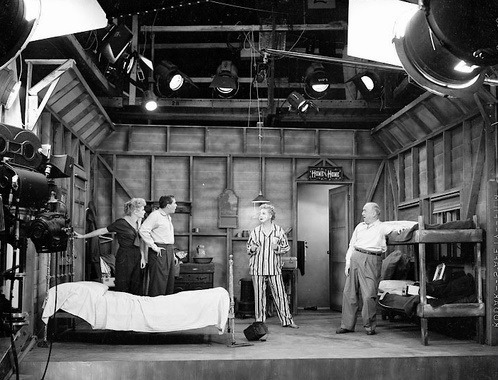
“First Stop” (1955) ~ On their cross-country road trip, the gang takes refuge at One Oak Cafe and Cabins. Their rundown cabin is near an unseen (but loudly heard) railroad - which causes the entire building to shake!

“Ricky Sells The Car” (1955) ~ In this episode we learn that the gang will return to NYC by train on the Union Pacific Railroad’s new Domeliner service on the City of Los Angeles train. A rift develops between the Ricardos and Mertzes when there aren’t enough tickets in the same class. Don Brodie plays the Union Pacific Railroad clerk.
Before he entered show business, William Frawley (Fred Mertz) worked as a stenographer for the Union Pacific Railroad.
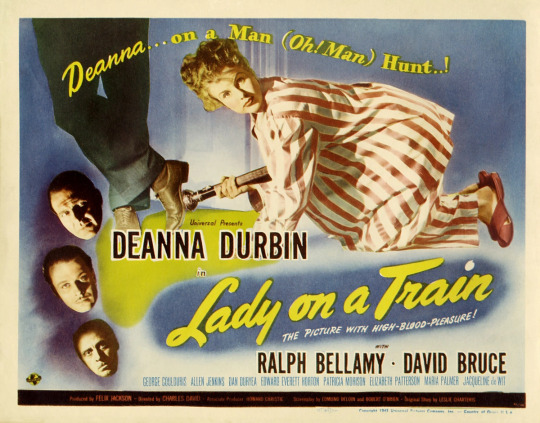
Frawley was featured in the 1945 Deanna Durbin film Lady on a Train. The Universal release also featured future “I Love Lucy” cast members Elizabeth Patterson (Mrs. Trumbull), Edward Everett Horton (Mr. Ritter), Allen Jenkins, Fred Aldrich, Joseph Crehan, Mike Lally, Sam Harris, and Sam McDaniel, who played a train porter, just as he would in...
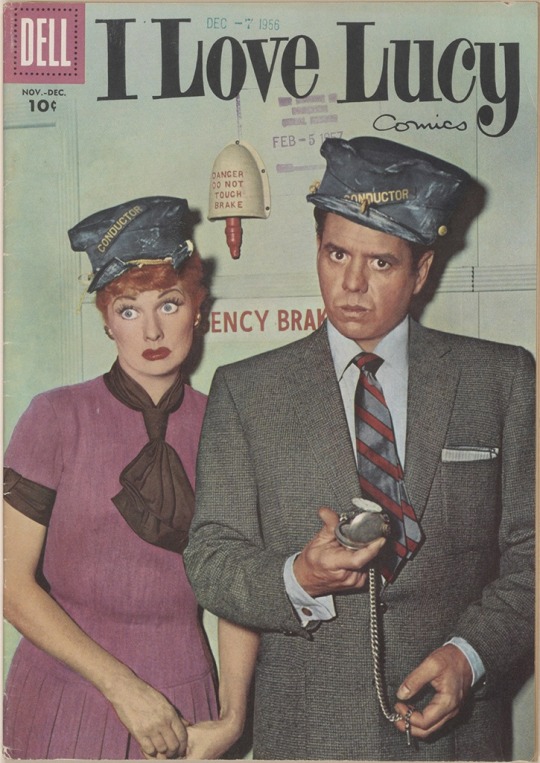
“The Great Train Robbery” (1955) ~ Returning from Hollywood to New York, Lucy wreaks havoc on the City of Los Angeles train.

As set up in the previous episode, Desilu had a partnership with Union Pacific Railroad. The line operated the City of Los Angeles train from 1936 to 1971, when Amtrak took over national train service in the USA. Although it is not mentioned, the train route terminated in Chicago, where, presumably, the foursome got a connecting train to New York City, perhaps the famed 20th Century Limited.
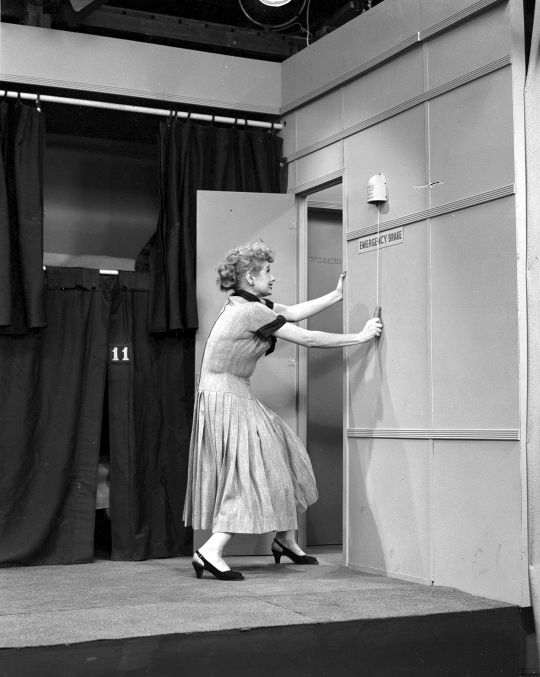
To simulate the emergency braking of a speeding train, Desi wanted more than just actors reacting to a jolting camera, so sets were built on a spring mechanism that was triggered by the emergency brake itself. When Lucy pulled the handle, it caused the entire set to lurch forward in a sudden movement. All this is demonstrated in the special features section of the DVD release.

As part of the partnership with UPR, Desilu was granted permission to film aboard the real Domeliner train. As there was a nearby train station, Vivian Vance, William Frawley, Kathryn Card, Frank Nelson (the conductor) and Sam McDaniel (the porter) were all featured in the location footage on the platform and doubles were not used. Lucille Ball and Desi Arnaz, however, do not appear in any of the second unit location footage. This is the only time principal cast members (instead of doubles) went on location during the half-hour series.

Footage of Fred and Ethel enjoying the Domeliner’s dining car and lounge were cut when it was realized that movement outside the window did not line up with the episode’s continuity. Rare 16mm film footage of the scenes was discovered and allowed the cut scenes to be added to the 2005 DVD release.

The lounge, however, was recreated on the soundstage. The short scene of the Mertzes boarding the train on the platform (complete with sound), assisted by the Porter and the Conductor, was still included in future syndicated broadcasts.

“Lucy’s Italian Movie” (1956) ~ Opens in a crowded train compartment headed to Rome. Here Lucy meets a film director and thinks this is her big break.

Band manager Fred failed to secure proper train acommodations for the overnight trip - forcing the gang into some unusual sleeping positions!
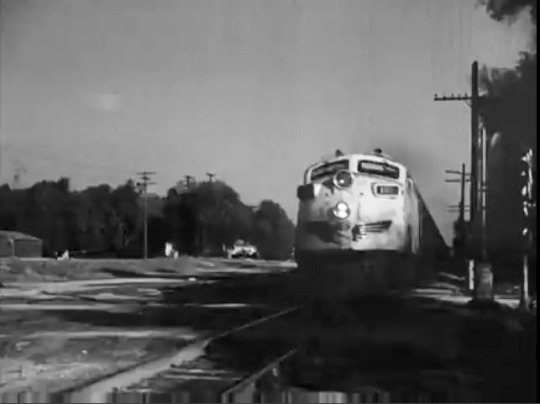
“Lucy Hunts Uranium” (1958) ~ The hour-long episode opens in a train car headed to Las Vegas, where Ricky's band is booked to perform at the Sands Hotel and Casino. Establishing footage indicates that they are traveling on the Union Pacific Railroad. In reality, getting to Las Vegas by train from Connecticut would have meant many transfers and route changes.

On the train they meet actor Fred MacMurray, who also gets uranium fever and races the Ricardos and Mertzes across the desert on a railroad handcar.

“Lucy Visits the White House” (1963) ~ Lucy and Viv accompany their scout troop to Washington DC on the train. The episode features establishing footage of an actual train and station.

The train makes stops in Greenview, Middlebrook, Flint Ridge, and Scottville. Like Danfield, all are fictional towns along a fictional railroad line.
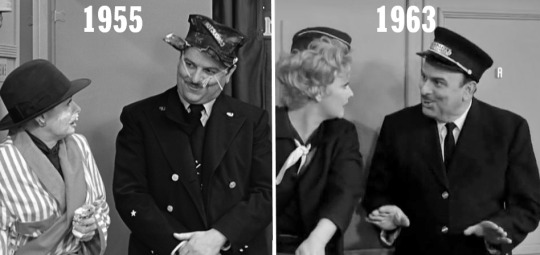
Frank Nelson reprises his role as the frazzled train conductor, first played in “The Great Train Robbery”.
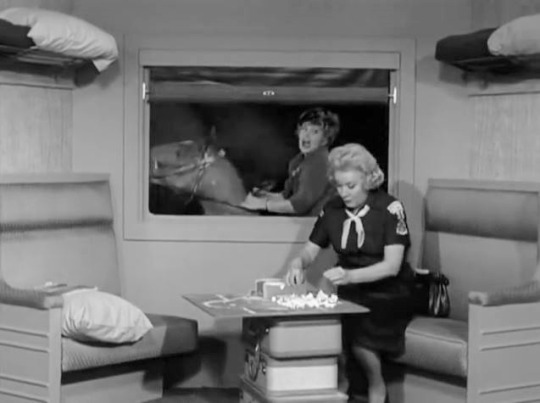
When Lucy misses the train, she tries to catch up on horseback. This sequence was shot on the soundstage using a mechanical horse. Coincidentally, an early literary name for a train was ‘iron horse’.
THE ‘FOREVER DARLING’ EXPRESS

Lucy and Desi board a special car provided by the Santa Fe Railroad to promote the film Forever Darling in early 1956.

The train was dubbed the “Forever Darling Special with stops in Chicago, Detroit, Dallas, Cleveland, Pittsburgh, Philadelphia, New York City, and Ball's hometown of Jamestown, New York.
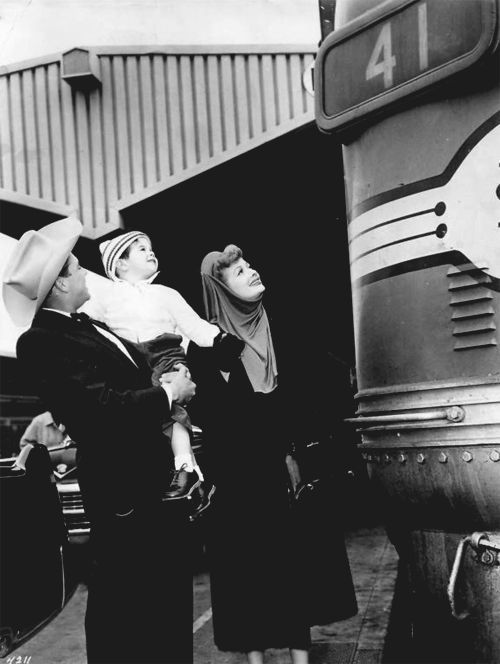
Back in Los Angeles, with Desi Jr., they admire the train that served them on their busy promotional tour. Desi is proudly wearing the cowboy hat he’d been given in Fort Worth.
TRAIN DEPOTS

“Off to Florida” (1956) ~ When Lucy misplaces their train tickets to Miami Beach, she and Ethel must share a car ride to Florida with Edna Grundy, a woman they suspect might be a hatchet murderess. At the end of the cross-fade between the second unit footage of the “North Miami” train station and the studio set of the same location, Lucy and Ethel’s doubles can be briefly glimpsed walking down the tracks on the left.

“Lucy and the Loving Cup” (1957) ~ Unable to tell where she is, Lucy gets off the subway train at the Flatbush Avenue station.
LUCY: Pardon me. Can you tell me where the stairs are?
STRAP-HANGER: Well, you'd better get off the train first.
LUCY: I am off.
STRAP-HANGER: You're telling me.

“Lucy Misses the Mertzes” (1957) ~ The scene at the Westport Train Station is in the best tradition of farce, with both couples narrowly missing one another in the same space.

“Lucy and the Mustache” (1960) ~ Disguised as Ernie Kovacs’ chauffeur, Lucy parks outside the Westport train station.

“Lucy Wants a Career” (1959) ~ Lucy and Ricky only see each other at Grand Central Station, one of the most famous train stations ever built. There is establishing footage of Grand Central.
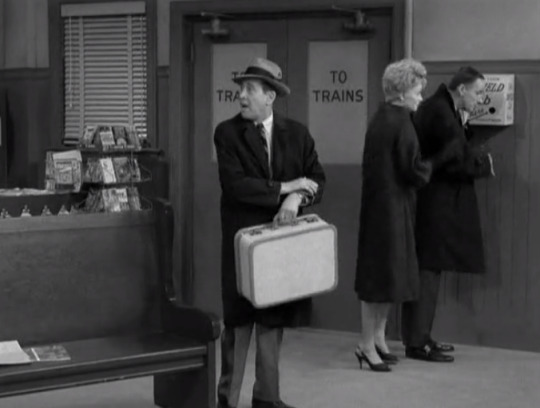
“No More Double Dates” (1962) ~ At the Danfield Train Station, Lucy and Harry narrowly miss Viv and Eddie when trying to have independent dates. When Lucy and Harry lie about missing their train, Eddie notes that the next one only makes one stop - in New Rochelle. The real-life New York town has already been mentioned several times in the series, establishing that Danfield (and nearby Ridgebury) are similar commuter suburbs of Manhattan.

“Lucy Visits the White House” (1963) ~ Lucy gets off the train at the Greenview Station to hunt down sugar cubes to rebuild the cubs’ sugar cube White House.
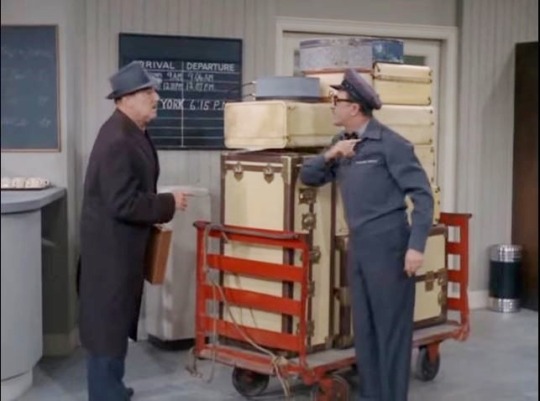
“Lucy is a Process Server” (1964) ~ Charged with serving Mr. Mooney, Lucy tracks him to the Danfield Train Station.

“Main Street U.S.A.” (1967) ~ Lucy and Mr. Mooney arrive in the small town of Bancroft by train.
TOY TRAINS
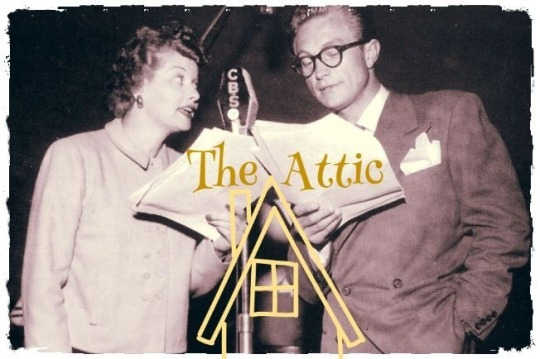
“The Attic” (1949) ~ An episode of Lucille Ball’s radio series in which George and Liz (Lucille Ball) clean out the attic and get locked in.
GEORGE: Hey, look at that! My wonderful electric train.
LIZ: Well, I haven't heard you use that tone since you proposed.
GEORGE: Oh, gosh, I haven't seen this train in years.
LIZ: Well, you certainly have no use for it now. Out it goes.
GEORGE: Take your hand off that box! It stays!
LIZ: Oh, George, don't be silly!
GEORGE: Now, who's being silly? That train doesn't leave this house.
LIZ: Now, that's being practical. There's nothing as useful as an electric train. In fact, we should get another one for me. We can race them every night before we go to bed!
GEORGE: Yeah. I guess you're right. Out it goes.
LIZ: I'll let you keep your train if you let me keep my corsage collection.
GEORGE: It's a deal!

LUCY: “Look out for the Super Chief! Woo Woo!”
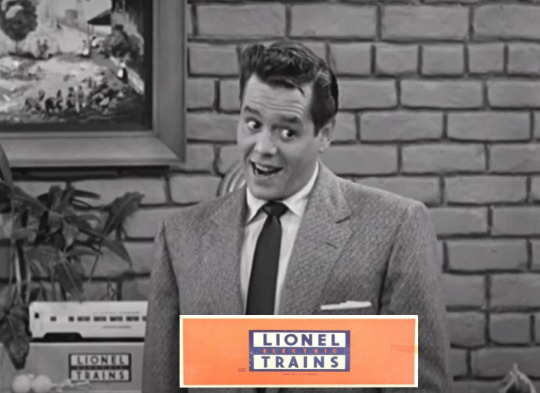
“The Ricardos Change Apartments” (1953) ~ Lucy fills the apartment with Little Ricky’s toys, including a Lionel Electric Train Set, to convince him they need a larger apartment.

“Little Ricky Gets Stage Fright” (1957) ~ Little Ricky is discovered playing with his Keystone Toy Railroad, a wooden train set made by the Keystone Manufacturing Company. The box is tucked under the bed.

“The ‘I Love Lucy’ Christmas Show” (1956) ~ Lionel Trains are under the Christmas tree for Little Ricky.
“My behind-the-scenes memoris are just the toys on the set. The writers, Madelyn and Bob, gave me a Lionel Train set and that was a real big treat for me as a kid.” ~ Keith Thibodeaux (Little Ricky)
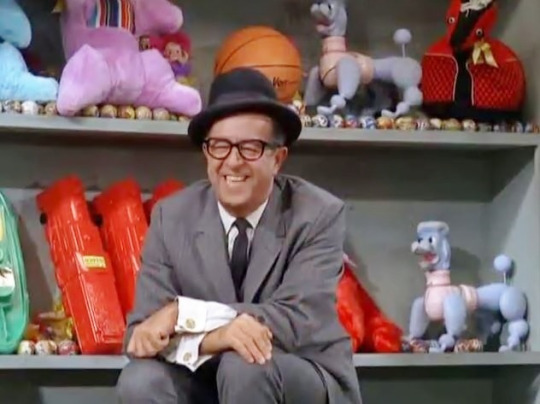
“Lucy and the Efficiency Expert” (1966) ~ Oliver Kasten (Phil Silvers) sits in front of red blow mold locamotives at the Grantland Toy Factory where Lucy is employed on the production line.
THE SUBWAY

“Tennessee Ernie Visits” (1954) ~ Ernie explains the subway.
ERNIE: I asked a fella how to get to the Rickerdos'. Well, he said, "Take the subway." Well, he pointed over there to a hole in the ground with some steps a-going down in it. I went down in there, and do you know what I saw? A bunch of people a-standing there looking in a ditch. Well, here come two streetcars hooked up together. All that bunch of people come a-steamin' up there pushed me through that door, shut it up, and we took off like a scalded gander. Well, sir, we drove and drove and drove and do you know what?
RICKY: What?
ERNIE: That driver never got that thing out of that hole.
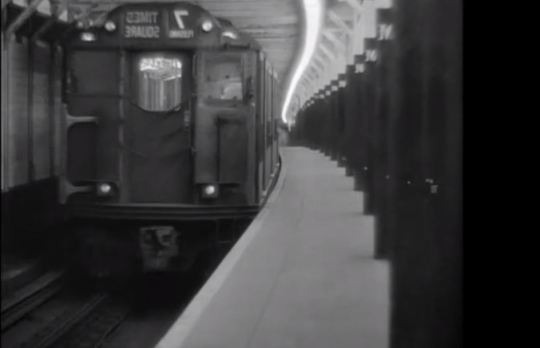
“Lucy and the Loving Cup” (1957) ~ When Lucy gets a loving cup stuck on her head, she must take the subway to Brooklyn to get it off. The episode features establishing footage of the New York Subway trains, although the footage was reversed.
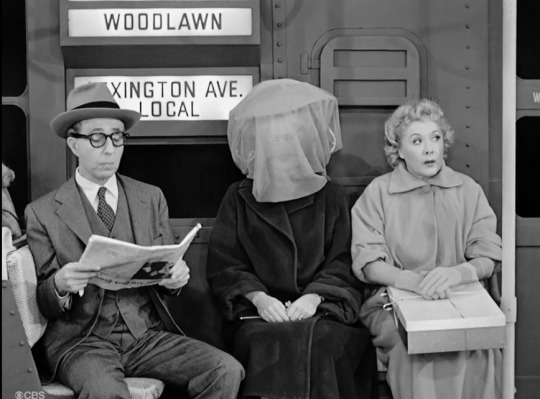
The subway car was recreated on the Desilu soundstage in Hollywood.

#Train#Locamotive#I Love Lucy#Railroad#Railway#Lucille Ball#Desi Arnaz#Subway#Vivian Vance#William Frawley#Seinfeld#The Lucy Show#Train Station#Grand Central Station#depot#Tennessee Ernie Ford#Phil Silvers#My Favorite Husband#Little Ricky#Keith Thibodeaux#Lionel Trains#Santa Fe Railroad#Union Pacific Railroad#Lady on the Train#Frank Nelson#Gale Gordon#Fred MacMurray#Forever Darling
2 notes
·
View notes
Text

an idiots guide to gotham.
sim, i hear you say, what the hell are you doing? it’s gotham. everyone knows gotham. batman’s hometown. arkham asylum. what more is there to know?
surprisingly, a lot.
for example, did you know that the it has been described as "Manhattan below Fourteenth Street at eleven minutes past midnight on the coldest night in November." which i think is one of the coolest descriptions of an aesthetic ever. thanks dennis. anyway, there’s a lot more to this city and it’s mad confusing history than first meets the eye, so in true sim fashion, i’m here to whoop dc into shape and attempt to make sense of it all. in the immortal words of coldplay “oh take me back to the start.”
as a geography nerd, i’d like to begin way way back. like continent forming era. star wars’ a long long time ago has got nothing on this. because really, why is gotham so plagued with crime and corruption? why is it perpetually cloudy and gloomy and dark? why is this tiny patch of american coastline continually the stage for insane events while everywhere else around it seems perfectly fine and chilling.
it’s because of cthulu.
well, kind of. seriously. apparently trapped beneath the actual earth of gotham is a lovecraftian-esque being who’s been chilling for 40,000 years. yeah, bet you didn’t know that. it even takes to calling itself “doctor gotham” after long enough, but that might just be a writer taking the piss out of dr manhattan, which honestly, im here for. so there’s some ancient slumbering god just poisoning what will become gotham, with it’s “evil essence” or whatever. there is a native american tribe who lives in the area - the miagani. in a croatoan-like fashion, they mysteriously disappear one day: no one knows exactly what happened to them, but there’s speculation of black magic and an insane shaman who goes all caesar on them and tries to develop a tyrannical rule, but they seal him in a cave and flee only to be slaughtered by a neighbouring tribe/a mysterious natural disaster. already this place is giving off the Not Good Vibes.
some time later a bunch of colonists arrive, one of whom is named hiriam arkham. he tries to build a chapel, but it ends up being the site of a murder and so that idea is abandoned. the colonists later accidentally open the cave and release Deacon Blackfire (nasty shaman man), who is fairly immortal, definitely a shithead, and also becomes a batman adversary and a black lantern corp member/zombie in a few hundred years. fun. the colonists are never seen again. wonder what happened there.
so the ground keeps being corrupted and drawing the nasties to it. one of these nasties is a norwegian mercenary, captain jon logerquist, who lands there circa 1635 with his crew, feels the heeby jeebies vibe and goes ah yes. this is where i shall settle. utter weirdo. so suddenly we have a city being formed - you guessed it, gotham city, also known simply as gotham. and everything is fairly chill for a while. the city is known to be a hideout for ruffians and smugglers, has a fairly higher proportion of stabbings and burglaries, but other than it being a bit of a lawless wasteland, it’s not, you know, any stranger than other pre-civil war american towns. at some point war for independence ( 1775–1783 ) rolls through, and there’s a fairly large battle that is long and bloody and doesn’t look like is going to be won so the founding fathers decide to do something extra stupid, and summon a bat-demon. yes, literally, a bat-demon. that they think will help them turn the tides of the battle. instead they realise it can’t be controlled, panic a bit, and end up trapping it beneath gotham, nice and snuggled next to fucking cthulu’s cousin. so gotham is now especially Cursed, and also starts gathering a large number of bat colonies in it’s underground cave system, because they’re all coming to worship this demon thing or w/e.
next step is the civil war ( 1861-1865 ), and this is the first time we get a cobblepot in town - colonel nathan cobblepot to be precise. a couple of generations happen, and the town is growing into a city - at this point five of the families truly “found” gotham as a metropolitan and industrial hub, building bridges to connect the islands and forging the path to gotham as it is today. these five families are the cobblepots, the elliots, the crownes, the kanes and the waynes. these eventually become known as gotham’s oldest lineages, and it’s wealthiest, forming the future of gotham high society. however the cobblepots eventually end with penguin, and thomas elliot gets salty and becomes hush ,and the kanes and waynes decide to start dressing up as bats so it’s more like a cautionary tale than anything.
around this time (1870), ra’s al ghul builds wonder city beneath gotham’s old town, and around a naturally occurring lazarus pit under the city. wonder tower becomes a spectacle of the gotham skyline, their equivalent to the empire state or big ben. eventually the project is abandoned, especially after mysterious disappearances, rumours of madness and strange sounds of rioting emerging from the nearly completed project. also occurring in this decade is the conversion of arkham manor into the elizabeth arkham sanatorium (which would later become arkham asylum) under the then heir, amadeus arkham. elizabeth commits suicide, a serial killer murders the rest of the family, save amadeus, who then goes mad and begins dabbling in the occult and experimenting on patients, eventually becoming one himself. despite all this, arkham asylum remains open, setting the scene for this to be one of the most tragic and fucked up buildings in america.
another generation goes by and the wayne family produces solomon wayne, who will eventually become an incredibly important figure to gotham, partly because he is a judge and has a courthouse named after him and all that, but mostly because solomon wayne is the man who hires cyrus pinkney. who? you ask. literally the man responsible for gotham’s fucked up architecture. solomon wayne commissions him to create what he calls “gotham style” around 1890, and pinkney, heavily influenced by both cubist/surrealist design and the gothic revival, is the bastard who ensures everything has a gargoyle slapped on it and that gotham cathedral could literally be home to dracula. every inch of the city is covered in hidden meanings and mysticism, because, if you haven’t already guessed, pinkney was a bit nuts, but solomon wayne seems mighty pleased by this and it does actually boost gotham’s industry and cause people to relocate to it from the surrounding area. pinkney’s final piece de resistance is the statue the lady of gotham (officially named Justice opens her eyes to the world ) in the gotham harbour, yet another new york parallel.
however as a result of booming capitalism and continued gentrification, gotham develops extreme poverty, with several areas of the city, specifically around the docks, the bowery and the narrows, becoming slums. crime levels continue to rise, and many writers take inspiration from chicago and new york mobs in the 30′s and 40′s, drawing parallels and creating organised crime, mafias and gangs. families like the maronis, falcones and thornes begin to take over the city, shaking down businesses for “protection” developing protsitution and drug running rings, importing weapons etc. gotham becomes seen nationally as a dark foreboding metropolis, where the ultra-rich one percenters drink champagne in their ivory towers while the poor of the city suffer and die. city planners also take this opportunity to go absolutely nuts, and build bomb shelters, underground highways, crazy sewer systems, you name it. after all, no one cares right? it’s gotham. by the time the cold war comes to a head, the city is literally riddled with layers of alleys and tunnels and walkways, all over burdened by the watchful eyes of giant bronze statues and stone grotesques.
then, thomas and martha wayne appear, and really start trying to change the city. they develop philantrophic interests, help to create the monorail, encourage the other wealthy elite of the city to care about the rotting corpse of gotham. change is slow, but it happens. the city starts to brighten up, vaguely, and the waynes become heralded as gotham’s saviours, becoming more than a household name. of course, they get shot, in an alleyway, by joe chill, and that same night batman is born. it takes him like 20 years to actually appear in the city, but boy when he does appear, he goes ham. this isn’t a batman meta tho, so i’ll keep it light on his backstory and involvement.
batman tackles corruption in the city, purging the gcpd, bringing criminals to justice etc, all while bruce wayne makes his lauded return and begins trying to change things in the same way that his parents did - investing in the city, creating public services, developing grass roots projects in the worst affected areas of gotham. however, this city is quite literally Cursed and it all goes very wrong very quickly.
first, ra’s al ghul unleashes the clench (also known as Ebola Gulf A virus) into gotham high society, and through the contagion storyline, a LOT of gothamites die. i think it’s like 40% but don’t quote me on that. the whole city is quarantined, but batman manages to save the day! hooray! wrong. the second disaster happens in the cataclysm arc - a 7.6 richter earthquake (although in my professional opinion this should probably be measured using the mercalli scale because you have to take into account the density of population etc in the area, but whatever, dc don’t study earthquakes like i do :/). as a result of these two events happening literally within months of each other, the entire city is declared a “no man’s land” by the US government. most civilians are evacuated, it is cut off from the mainland by destroying bridges and creating a military blockade and left to literally rot. no central government is applicable, no services are available, and very quickly gangs take over, carving up the city between them. imagine the purge but never ending. that’s gotham. huntress and oracle and the remaining scraps of the gcpd try to keep some kind of order, while bruce fucks off to petition the government into not being dicks and fixing the city rather than abandoning it. eventually, he comes back, batman battles a lot of people, luthor donates enough money to save the city and gotham is rebuilt and repatriated as part of the us.
then the next big events include:
• henri ducard as ra’s al ghul tries to cover the city in fear toxin after teaming up with scarecrow. the narrows is especially targeted.
• steph accidentally starts a gang war after going through batman’s stuff unsupervised. for a while black mask rules gotham.
• hugo strange convinces the gotham city council to let him have old gotham, which he converts into arkham city. eventually wonder tower explodes and the “city” is shut down, cut off from the rest of gotham.
• scarecrow successfully releases his fear toxin over gotham via the cloudburst system. most civilians have already been evacuated, but the city is thrown into ruin and chaos.
these are just the biggest points though, and the ones which help to tie film, comics and games together. my favourite part of gotham i haven’t even talked about yet. but i’m gonna. here we go.
gotham is chronologically removed.
obviously time progresses there, but there is a immense sense of timelessness. gotham does not move on with the rest of the world. there’s a huge mash of different eras and styles. there are airships in the sky and maglev monorails on the ground, people use typewriters alongside touch screen laptops, buildings are either twisted gothic nightmares or glistening modern skyscrapers. the time frame that should be obvious from the setting is completely ambiguous. and it’s brilliant, because really it means that the time is not important. it could be set anywhere, anywhen. gotham looks almost the same in the 40s as it does in 2020, and it means that batman and these events can be slotted into pretty much any decade. batman can be born in 1939 or 1969 or 1999 and it still all works. it’s a mash up of modern expressionism and constructivism and art deco and gothic revival and surrealism and space-age futurism and industrialism and honest to god i could literally talk about this all day. but i mustnt so i shall stop now.
basically the tldr here is that i have a fetish for urban decay, gotham was fucked from day 1 due to some bullshit evil god beneath it, and literally house prices must be so low, because who the hell would want to live there.
30 notes
·
View notes
Text
Sheryl Swoopes

Sheryl Denise Swoopes (born March 25, 1971) is an American former professional basketball player. She was the first player to be signed in the WNBA, is a three-time WNBA MVP, and was named one of the league's Top 15 Players of All Time at the 2011 WNBA All-Star Game. Swoopes has won three Olympic gold medals and is one of ten women's basketball players to have won an Olympic gold medal, an NCAA Championship, and a WNBA title. She was elected to the Naismith Memorial Basketball Hall of Fame in 2016. In 2017, she was inducted into the Women's Basketball Hall of Fame.
Early success
Born in Brownfield, Texas, Swoopes was raised by her mother, Louise Swoopes, and played basketball with her three older brothers. She began competing at age seven in a local children's league called Little Dribblers. She played basketball at Brownfield High School.
College years
Initially recruited by the University of Texas, Swoopes left the school shortly after her arrival without playing a game and enrolled at South Plains College. After playing at South Plains for two years, Swoopes transferred to Texas Tech, near her hometown.
In 1993, Swoopes won the NCAA women's basketball championship with the Texas Tech Lady Raiders during her senior season. Her jersey was retired by the school the following year, making her one of only three Lady Raiders to be honored in this way. The others are Carolyn Thompson and Krista Kirkland, Swoopes' teammate from the 1993 championship team.
As of 2010, Swoopes was still a part of the women's basketball record books in many categories, including single-game scoring record (53 points on March 13, 1993 vs. Texas, tied for tenth place), single-season scoring (955 points in the 1993 season, fourth place), highest championship tournament scoring average (35.4 in the 1993 tournament, second place), best single-game championship scoring performance (47 points vs. Ohio State, 1993 championship), which broke Bill Walton's record, and scoring record for championship series (177 points, five games). She set the record for the most field goals in the championship game with 16.
Swoopes also set several school records at Texas Tech. She scored 0 points in the 1992–93 season, which is an all-time scoring record for a single season (as of 2006). Swoopes' 24.9 points-per-game average for her career is the best in school history; she also boasts zero triple-doubles and 23 double-doubles, 14 of which came during her senior year.
Swoopes was the 1993 winner of the Naismith College Player of the Year award, was selected as that year's WBCA Player of the Year, and was chosen to the Division I All-American squad in both 1992 and 1993. Swoopes was named the 1993 Sportswoman of the Year (in the team category) by the Women's Sports Foundation.
Texas Tech statistics
Source
USA Basketball
Swoopes was named to the USA national team and competed in the 1994 World Championships, held in June 1994 in Sydney, Australia. The team was coached by Tara VanDerveer, and won their first six games, when they faced Brazil. In a closely contested, high-scoring game, Brazil hit 10 of 10 free throws in the final minute to secure a 110–107 victory. The USA won a close final game against Australia 100–95 to earn the bronze medal. Swoopes averaged 9.1 points per game, while recording seven steals, second-highest on the team.
Swoopes was selected to represent the US at the 1995 USA Women's Pan American Games, but only four teams committed to participate, so the event was cancelled.
Swoopes continued as a member of the USA team at the 1996 Olympics, held in Atlanta, Georgia. The USA team won all their pool play games by large margins, although they were behind Cuba by as many as seven points before Lisa Leslie's 24 points helped the USA take over the game.
In 2002, Swoopes was named to the national team which competed in the World Championships in Zhangjiagang, Changzhou, and Nanjing, China. The team was coached by Van Chancellor. Swoopes scored 16.9 points per game, second-highest on the team and recorded a team-high 24 steals. The USA team won all nine games, including a close title game against Russia, which had a one-point difference late in the game.
Swoopes was named to the National Team representing the US at the 2006 World Championships, held in Barueri and Sao Paulo, Brazil. The team won eight of their nine contests, but the lone loss came in the semifinal medal round to Russia. The USA beat Brazil in the final game to earn the bronze medal. Swoopes, hampered by injuries, averaged 3.0 points per game and was second on the team with six blocks.
WNBA career
Swoopes was recruited for the Houston Comets of the WNBA during the 1997 inaugural season. She returned only six weeks after giving birth to her son to play the last third of the WNBA inaugural season and lead the Comets in the 1997 WNBA Championship. As a member of the Houston Comets, she has accumulated over 2,000 career points, 500 career rebounds, 300 career assists, and 200 career steals. Her extraordinary scoring and defensive ability have made her the first three-time WNBA MVP (2000, 2002, and 2005) and the first three-time WNBA Defensive Player of the Year (2000, 2002, and 2003). Swoopes is a four-time WNBA champion (1997–2000).
Swoopes is the second player in WNBA history to win both the regular season MVP award and the All-Star Game MVP award in the same season. The first player to accomplish this was Lisa Leslie. Swoopes is also the first player in WNBA history to record a triple-double in both the regular season and the playoffs.
Swoopes gained national prominence when she won the gold medal with the USA Basketball Women's National Team at the 1996 Olympic Games and became a focal point of the fledgling WNBA. The 1996 Olympic win over Brazil (117–87) is considered by some to be the "best woman's basketball game they'd ever seen." She is a three-time Olympic gold medalist (1996, 2000, and 2004).
Swoopes is the first women's basketball player to have a Nike shoe named after her: the "Air Swoopes".
On March 3, 2008, Swoopes signed with the Seattle Storm, ending her 11-year career with the Houston Comets. She was waived by the Storm on February 3, 2009.
Two days after her 40th birthday in 2011, sources for the Associated Press claimed that Swoopes was preparing to return to the WNBA in anticipation of an official signing announcement from the Tulsa Shock. At the 2011 WNBA All-Star Game, she was announced as one of the top 15 players in the 15-year history of the WNBA.
On August 26, 2011, the 40-year-old Swoopes hit a buzzer-beating shot to edge the Los Angeles Sparks 77–75 and end the Shock's WNBA-record 20-game losing streak.
Swoopes became an unrestricted free agent after the 2011 season: Tulsa Shock owner Steve Swetoha announced on 15 February 2012 that the team did not intend to offer Swoopes a new contract. As of the beginning of the 2012 preseason on 5 May, Swoopes remained an unsigned free agent. While no official announcement has been made, when Swoopes began blogging at the Shape magazine website during the 2012 Olympic Summer Games, she identified herself as "a former professional basketball player." In 2016, she was voted into the WNBA Top 20@20, in celebration of the league's 20th anniversary.
International career
Europe
1993–1994 : Basket Bari
2004–2005 : VBM-SGAU Samara
2005–2006 : Taranto Cras Basket
2010: Esperides Kallitheas
Post-playing career
In 2008, Sheryl Swoopes made an appearance on Shirts & Skins, a reality series on Logo TV. Swoopes mentored the San Francisco Rockdogs, a gay basketball team, and shared her experiences on basketball, family, faith, and coming out.
In 2010, Swoopes was an assistant basketball coach at Mercer Island High School in Washington.
Swoopes was a color analyst for the Texas Tech women's basketball broadcast during the 2012–2013 season.
In 2013, Swoopes became head coach of the Loyola University Chicago women's basketball team. In April 2016, Loyola announced that it was investigating Swoopes of alleged mistreatment, after the school newspaper reported that 10 of the team's players have either transferred or want a release from their scholarships. On July 4, 2016, Loyola announced it had fired Swoopes as a result of the investigation but declined to say what it had found.
In July 2017, Swoopes returned to her alma mater, Texas Tech, hired as the women's basketball program's Director of Player Development, where her job included resuming work as broadcast color analysis for Lady Raiders games. Following the firing of head coach Candi Whitaker on January 1, 2018, Swoopes was promoted to regular assistant coach under interim head coach Shimmy Gray-Miller.
Personal life
Swoopes was married from June 1995 to 1999 to her high school sweetheart, with whom she has one son, Jordan Eric Jackson (b. 1997).
In October 2005, Swoopes announced she was gay, becoming one of the highest-profile athletes in a team sport to do so publicly. Swoopes said, "it doesn't change who I am. I can't help who I fall in love with. No one can. ... Discovering I'm gay just sort of happened much later in life. Being intimate with [Alisa] or any other woman never entered my mind. At the same time, I'm a firm believer that when you fall in love with somebody, you can't control that." She and her partner, former basketball player and Houston Comets assistant coach Alisa Scott, together raised Swoopes' son. The couple broke up in 2011. Later that year, Swoopes got engaged to Chris Unclesho, a longtime male friend; the couple wed after a long engagement on July 21, 2017.
Awards and honors
Swoopes won the female Associated Press Athlete of the Year award in 1993. The same year, she also won the Honda Sports Award for basketball and the WBCA Player of the Year award. She was named one of the 20 female athletes of the decade for 2000 to 2010 by Sports Illustrated. She was named an LGBT History Month Icon by the Equality Forum.
4 notes
·
View notes
Photo

Don't You Stop, We Won't Stop
EC Brown
Lise Baggesen
Rodrigo Lara Zendejas
Sarah Beth Woods
Felicia Holman
Opening reception:
Saturday, February 15 from 7-10 pm
From February 15 to April 25, 2020
“Hot topic is the way that we rhyme
Hot topic is the way that we rhyme
One step behind the drum style
One step behind the drum style
Carol Rama and Eleanor Antin
Yoko Ono and Carolee Schneeman
You're getting old, that's what they'll say, but
Don't give a damn I'm listening anyway
Stop, don't you stop
I can't live if you stop
Don't you stop
Gretchen Phillips and Cibo Matto
Leslie Feinberg and Faith Ringgold
Mr. Lady, Laura Cottingham
Mab Segrest and The Butchies, man
Don't stop
Don't you stop
We won't stop
Don't you stop
So many roads and so much opinion
So much shit to give in, give in to
So many rules and so much opinion
So much bullshit but we won't give in
Stop, we won't stop
Don't you stop
I can't live if you stop
Tammy Rae Carland and Sleater-Kinney
Vivienne Dick…”
- Lyrics from Hot Topic by Le Tigre, 1999

EC Brown
My wife Catie's annual Krampusnacht event last December included a holiday market, and I presented a bin of paintings on chipboard that were folded like heavy 45 sleeves—with mulch+foliage+ploymer record shapes that became too encrusted to fit inside. The images invented an old psychedelic Krampus underground—militant and Luciferian. Dolly appeared as a surprise digression in the wee hours before the deadline.
For the past seven years of Krampusnacht, I have sidestepped the European relics in favor of thoughts about American undercurrents—rowdy, sexual, heretical, and perilously savage. But I like to imagine that the deeper magma is something propulsive and generative, rather than malignantly atavistic. An inevitable rebellion against civilized living.
With Edra's prodding, I'm pursuing the Dolly tangent: imagining a history in which the liftoff of her solo career was profoundly controversial—to the point that an enclave of armed male consorts developed around her. Perhaps her audience had detected a Luciferian bent in her, that would need time to transition to a more acceptable yet radical Christianity.
EC Brown: I prefer a collision of illustrative image-making that begs attention to narratives, and physical formats that shift these works into roles as implements or tactical objects addressing spaces and situations. Images have been a tempered fever-dream drawing from 1960s–70s aesthetics, pop occultism, science fiction, Modernist architecture, biomimetics, industrial photography and observational cinema. Often they are absurdist historical revisions.
Since 2005, I have mostly operated in Chicago's domestic artspaces. I co-organized Floor Length and Tux (2009–2014, with Catie Olson) and COMA (2006–2008, with Annika Seitz). I periodically organize a roving series entitled ASCII (2011–present). Since 2015, I have been conducting a discreet series out of my home entitled Tascam.

Lise Haller Baggesen
Interpersonal relationships, intergenerational and intersectional eco- and cyber- and xeno- feminism, reproductive justice, therapeutic aesthetics, color field painting, sci-fi tie-dye, hippie modernism, bio-punk, grunge, glam, and disco, are some of the vernaculars that inform my body of work. Since graduating in 2013 from SAIC's department of Visual and Critical Studies, this organic body has manifested itself in a hybrid and polydisciplinamorous practice, including writing, audio-visual installations, textile-, and sartorial works.
Mother is a noun and a verb; I regard my practice as a sourdough, a gestation of material, out of which individual works, texts, and shows are wrought, while the mother remains, active.
Lise Haller Baggesen is a Danish born, Amsterdam raised, Chicago based, interdisciplinary artist. Her hybrid practice includes writing, installation, performative, sartorial and textile-based work. She is the author of Mothernism, and exhibits internationally, most recently with the multimedia show HATORADE RETROGRADE: THE MUSICAL, which premiered at SoEx in San Francisco in 2019 and will travel to G400 in Chicago in 2020

Rodrigo Lara Zendejas
I create memorials—fragmented, mischievous, and imperfect realities that reflect both a formal
break from traditional shape, while presenting an assemblage version of our collective social and political thoughts, concerns, and hopes. Although I was trained in the traditions of classical art, my pieces now are not always clean. Or finished. Or beautiful. My work holds the memory of an intimate process of becoming. In some bodies of work, I present obvious nooks and gashes, broad, quick strokes, and secretive, featherlike fingerprints, all of which aided in the modeling of the clay during the process of bringing the subject to life. It is this visceral and intimate approach to materials and form that drive my subjects of memory and memorialization through all of my works.
When considering the human form and its relationship to memorialization, immediate thoughts of bronze statues at historical sites come to mind. My fascination, however, is in the way that memory—with its inherent, ever-changing fluidity—disrupts our ability to fully or truthfully freeze, or memorialize people, moments, or perspectives in history. Instead, it is our momentary glimpses of memory and hindsight that drive how we understand the present.
As a Mexican immigrant to the United States, my works often rely on my own fragmented memories and stories of home, my direct experiences with fervent Catholicism, and other’s heroic (yet common) anecdotes of border crossing and acclimating to living in America. However, while my memories and relationships to patriotism, politics, my background, and my longing for the familiar certainly influence my work, it is my interest in the process, the poetics of the materials, and the action of sculpting that motivate my continued practice.
Born in Mexico in 1981, Rodrigo Lara Zendejas received a MFA from School of the Art Institute of Chicago (SAIC) in 2013. And his BFA from the Universidad de Guanajuato in Mexico in 2003. He has received several awards including: Proyectos Especiales FONCA (Fondo Nacional para la Cultura y las Artes) Mexico City; Emerging Artist Grant, Joan Mitchell Foundation, New York City; Jóvenes Creadores, FONCA, Mexico City; Extraordinary Abilities Visa, U.S. Citizenship and Immigration Services; Artist’s Grant, Vermont Studio Art Center; James Nelson Raymond Fellowship, 2013 SAIC Fellowship Competition; PECDA Estudios en el extranjero,Instituto Queretano de la Cultura y las Artes; the International Graduate Scholarship, SAIC; and the John W. Kurtich Travel Scholarship, SAIC Berlin/Kassel, Germany; among others. He won the first price in sculpture at the National Award for Visual Arts in Mexico in 2010. Lara held solo exhibitions at institutions such as the Museum of Modern Art in the state of Mexico, Hyde Park Art Center in Chicago, the National Museum of Mexican Art in Chicago, Kruger Gallery in Marfa, Texas, among others. He has been in such residencies as the Vermont Studio Center, ACRE, Ragdale, Cross Currents: Cultural Exchange, Mana Miami, and Rogers Art Loft. Currently, Lara lives and works in Chicago.
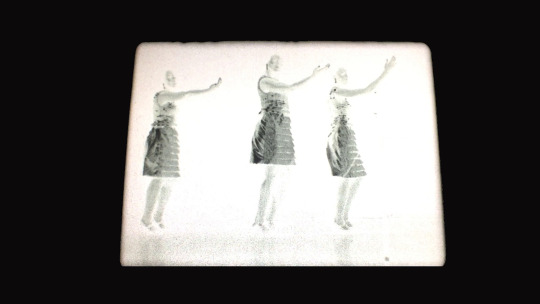
Flatscreen
Sarah Beth Woods
Hear the Glow of Electric Lights is a multifaceted project that centers around a black and white, 16mm reversal film, which investigates the choreographed performances of 1960s American pop music groups featuring girls and young women. During the summer of 2017, Sarah Beth Woods formed The Rhinettes, a conceptual girl group based out of Prosser High School on the West side of Chicago. Referencing the Supreme’s first nationally televised appearance and Cholly Atkins' choreography, the work reveals the inscription of sound on the body and other material surfaces.
Girl group: (L-R) Alexis Strowder, Yahkirah Beard, Anya Jenkins
Cinematography: Brian VandenBos
Choreography: Courtney Bradshaw
Costumes: Ann Heggans, Sarah Beth Woods
Sarah Beth Woods is a Chicago-based multidisciplinary artist. Woods’ background as a painter and critical cultural worker has led to an interest in the aesthetics and political implications of modern surfaces and the body, specifically skin and hair, saturated color and shine. Cultural influences derived from formative years spent on the Southwest side of Chicago continue to manifest in the content and aesthetics of Woods’ work, specifically black material culture and women’s conceptual spaces as sites of possibility and transformation.

Activation
Felicia Holman
"Originally created as a commissioned response to
Edra Soto’s 2018 exhibition ‘Open 24 Hours’, interdisciplinary artist Felicia Holman presents a reprise of her solo performance—Wassup w/that ‘YAC?! (WWTY). As both a cognac enthusiast and a native of Chicago’s South Side, Holman unpacks experiential / anecdotal support of the formative research cited in ‘Open24 Hours’. WWTY centers the perspective of a Black Gen X’er cis-female cognac consumer. How do historic/ (pop) cultural/ social/ economic factors impact and influence her consumption of “that smooth brown spirit”? Guided audience participation optional but warmly encouraged (21+ only). Total running time: 45-60 minutes, no intermission.”
Felicia Holman “Lifelong”: Chicagoan/ artist and Prince "fam" Felicia Holman is an independent cultural producer/programmer, as well as a co-founding member of Chicago-based Afrodiasporic feminist creative collective, Honey Pot Performance. Felicia creates, presents, and supports innovative interdisciplinary performance that engages audience and inspires community. Felicia’s artistic & professional practices are both are grounded in critical thought, intersectionality, community building & embodied storytelling. Some of her recent projects and career highlights include:
*Featured
artist in Jenn Freeman's "The People's Church of The G.H.E.T.T.O" and the 10th edition of Erin Kilmurray's "The Fly Honey Show”.
*Selected
as City Bureau's Fall 2019 Public Newsroom Series Curator.
*Featured
presenter at Arts Administrators of Color Network-DMV's 2019 Annual Convening (DC).
*Featured
artist / facilitator at Flux Factory's "Must They Also Be Gods" group exhibition (NYC).
*Facilitating
career development programming for emerging artists.
THE FRANKLIN
Address: 3522 W. Franklin Blvd, Chicago IL 60624 Cell to text: (312)823-3632Hours: Saturdays 2-4pm and by appointment Online: http://thefranklinoutdoor.tumblr.comInstagram: @thefranklinoutdoor
1 note
·
View note
Text
John Paul Stevens, long-serving Supreme Court justice, dies at 99
New Post has been published on https://thebiafrastar.com/john-paul-stevens-long-serving-supreme-court-justice-dies-at-99-2/
John Paul Stevens, long-serving Supreme Court justice, dies at 99
Only William O. Douglas and Stephen Field served longer on the Supreme Court than John Paul Stevens, seen here testifying before Congress in 2014 — and wearing his trademark bow tie. | AP Photo
Supreme Court
He gained influence over time as he evolved into the court’s most-liberal voice.
John Paul Stevens, the third-longest serving justice in U.S. Supreme Court history and a court figure whose influence grew markedly over his tenure, has died.
He was 99. The Associated Press reported that he died Tuesday in Florida after suffering a stroke Monday.
Story Continued Below
The bow-tie-wearing Chicago Republican served from December 1975 to June 2010, a term on the court only eclipsed by those of William O. Douglas (1939-75) and Stephen Field (1863-97). At the age of 90, Stevens was the second-oldest justice ever at the time of his retirement, behind only Oliver Wendell Holmes.
“He was not a justice who sought to become a celebrity or to assume the role of legal oracle,” said George Washington Law School professor Jonathan Turley in a 2009 Northwestern University alumni magazine profile.
“He is the quintessential judge — someone who holds to that traditional view that the function of any judge or justice is to decide cases fairly and clearly. His opinions have a distinctly Midwestern character: strong, honest and direct.”
Stevens’ Supreme Court career came at at time of a distinct ideological shift. He was nominated in 1975 by President Gerald Ford as the court was moving away from its most-liberal period, one dominated by such figures as Earl Warren, Hugo Black, William Brennan, Thurgood Marshall and Douglas, the liberal firebrand whom Stevens replaced.
By the time of his retirement in 2010, liberals were hoping that President Barack Obama’s choice of Elena Kagan would help balance a conservative court that had been dominated in recent years by Chief Justice William Rehnquist and his successor, John Roberts, as well as Antonin Scalia, Clarence Thomas and Samuel Alito.
During those years, Stevens evolved from a centrist and pragmatist to someone who was often the court’s most-liberal voice. His later years were marked by a number of scathing dissents, including inBush v.Gore, the case that decided the 2000 presidential election, andCitizens United v.FEC, the landmark 2010 election finance case. He also shifted to more liberal positions over the years on affirmative action and the death penalty
“He has served his nation well,” Ford wrote to Fordham Law School in 2005, “at all times carrying out his duties with dignity, intellect and without partisan political concerns. Justice Stevens has made me and our fellow citizens proud of my three-decade-old decision to appoint him to the Supreme Court.”
Even after his tenure ended, he made his voice heard. In 2018, he wrote a much-circulated column for the New York Times urging the repeal of the Second Amendment. He also spoke out against the confirmation of Brett Kavanaugh to the Supreme Court. In 2019, the 99-year-old went on the interview circuit to promote his newest book, “The Making of a Justice: Reflections on My First 94 Years.”
Roberts said Tuesday night of Stevens: “A son of the Midwest heartland and a veteran of World War II, Justice Stevens devoted his long life to public service, including 35 years on the Supreme Court. He brought to our bench an inimitable blend of kindness, humility, wisdom, and independence.“
“Justice Stevens was a remarkable man,” tweeted Sen. Ted Cruz (R-Texas). “He was the leading liberal on the Court & he was brilliant & full of grace & class. Having argued 9 cases before SCOTUS, I can tell you first-hand there was no more dangerous or effective questioner than Justice Stevens.“
President Donald Trump and first lady Melania Trump also offered condolences in a statement, noting “his passion for the law and our country.”
John Paul Stevens was born April 20, 1920, in Chicago. His father owned the Stevens Hotel, and the young Stevens often had contact there with the celebrities of the day, including aviators Charles Lindbergh and Amelia Earhart.
A lifelong Cubs fan, he was a boyhood witness to one of the most famous moments in baseball history, when Yankees icon Babe Ruth is supposed to have responded to heckling by the Cubs by pointing to the outfield stands and then clouting a World Series home run near that spot.
“Stevens recalled,” the Chicago Tribune wrote in 2016, “hearing the heckling coming from the Cubs dugout — particularly the razzing from [pitcher Guy] Bush — and clearly seeing Ruth holding up two fingers in a gesture toward center field.”
Stevens graduated from the University of Chicago in 1941 and Northwestern University Law School six years later, having served as a naval officer in in the interim and earning a Bronze Star during World War II.
After law school, he served as a clerk to Supreme Court Justice Wiley Rutledge, then went into private practice in Chicago. His reputation grew and in 1970, President Richard Nixon tabbed him for the Seventh Circuit Court of Appeals. “There was a consensus in the legal community,” wrote his biographers in “The Supreme Court Justices: Illustrated Biographies, 1789-1995,” “that Stevens was an unusually able jurist.”
In 1975, a vacancy occurred on the U.S. Supreme Court.
Douglas didn’t want to retire — he detested Ford and didn’t want him to pick his successor — but after a severe stroke in December 1974, his health declined sharply. According to “The Brethren” by Bob Woodward and Scott Armstrong, Ford had a list of 10 candidates. He narrowed it down to Stevens and Circuit Court Judge Arlin Adams before settling on Stevens.
“On the basis of a few moments of small talk,” Woodward and Armstrong wrote, “Ford had preferred Stevens. Stevens also seemed to have no partisan politics, no strict ideology. His anonymity would ensure a quick confirmation.”
The confirmation was indeed easy — Stevens was approved by a vote of 98-0. He was sworn in Dec. 19, 1975, little more than a month after Douglas retired. Stevens started quickly, writing the majority opinion in his first case,Hampton v. Mow SunWong, a jobs discrimination ruling.
In 1976, he joined the majority inGregg v.Georgia, a case that allowed the restoration of the death penalty in the United States. It overturned a 1972 verdict in which Douglas had voted the other way.
Two years later, he was part of a fractured majority in the Bakke case, which put the brakes on some affirmative action policies. That same year, he wrote the majority opinion forFCC vs. PacificaFoundation, upholding an obscenity ruling revolving around the broadcast of a George Carlin comedy routine. In both cases, he voted with the court’s conservatives.
Gradually, though, Stevens became more and more associated with the court’s shrinking liberal wing, though it’s a matter of debate as to whether he changed or whether the court simply outflanked him on the right.
“I don’t think of myself as a liberal at all,” he was quoted as saying in the New York Times in 2007. “I think as part of my general politics, I’m pretty darn conservative.”
A number of his most-prominent opinions certainly can’t be considered liberal. In 1997, he wrote for a unanimous court inClinton v. Jones, a case that allowed Paula Jones’s lawsuit against Bill Clinton to continue even though he was president. He also wrote the dissents in a pair of cases (Texas v. Johnson, U.S. v. Eichman) that upheld the right to burn an American flag.
Still, Stevens clearly moved to the left on some issues, changing his view on the death penalty — in a 2008 decision, he said he now believed it to be unconstitutional — and affirmative action, forming part of the 5-4 majority in the 2003Grutter v. Bollingercase.
With the 1994 retirement of Harry Blackmun, he became the senior associate justice, a position that allowed him to assign either the majority or minority opinion in each case. He became known for his ability to use that power to build coalitions in such cases asHamdan v. Rumsfeld(2006) andRasul v. Bush(2004), civil liberties cases resulting from the war on terror. In both cases, the rulings went against the Bush administration.
He was also part of the majority inLawrence v. Texas(2003), which overturned restrictions on same-sex sexual activity, and wrote the opinion inAtkins v. Virginia(2002) that deemed it unconstitutional to execute mentally handicapped defendants.
“It is largely because of him” wrote the Washington Post’s Charles Lane in 2006, “that a court with seven Republican-appointed members, and nominally headed by a conservative, Chief Justice William H. Rehnquist, produced a string of relatively liberal results in recent cases.”
Stevens also wrote a number of prominent dissents.
In December 2000, he was on the short end of a 5-4 vote inBush v.Gore, the decision that ended the legal wrangling over that year’s presidential election. His dissent was scathing: “Time will one day heal the wound to that confidence that will be inflicted by today’s decision. One thing, however, is certain. Although we may never know with complete certainty the identity of the winner of this year’s presidential election, the identity of the loser is perfectly clear. It is the Nation’s confidence in the judge as an impartial guardian of the rule of law.”
Stevens was also in the minority in the 2010 Citizens United case, which struck down campaign financing restrictions.
His dissent in the 5-4 ruling ran 90 pages: “At bottom, the Court’s opinion is thus a rejection of the common sense of the American people, who have recognized a need to prevent corporations from undermining self-government since the founding, and who have fought against the distinctive corrupting potential of corporate electioneering since the days of Theodore Roosevelt. It is a strange time to repudiate that common sense.”
Through the years, Stevens never attracted much attention from the public.
“The man himself, it is agreed, is quiet and mild-mannered,” wrote “The Supreme Court Justices: Illustrated Biographies, 1789-1995.”
“At one time or another, he has played serious squash, bridge, tennis and golf and flown his own small airplane. He possesses a puckishness that now and then finds its way into his opinions — particularly his concurrences and dissents. Justice Stevens has a fondness for bow ties, which, too, in its way, is a dissenting opinion.”
After his retirement, Stevens attributed his longevity to one simple thing — having married a dietitian, Maryan Mulholland Stevens in 1979, shortly after his divorce from Elizabeth, his first wife. “The most important key to my survival,” Stevens said, “is the advice I’d give to everybody in the room: Marry a beautiful dietitian.” She died in 2015.
Stevens later wrote a book titled “Five Chiefs: A Supreme Court Memoir” that focused on the five chief justices of his professional career, starting with Fred Vinson. It was a low-key book that reflected his great respect for the institution, though not without both praise and pointed criticisms for some of his fellow justices. In 2014, he followed with “Six Amendments: How and Why We Should Change the Constitution.”
Asked in April 2014 on ABC’s “This Week” about his achievements, Stevens offered a mixed view.
“It’s really awfully hard because it’s a series of individual, important events,” he said. “And some are terribly disappointing and some are terribly gratifying. you mix them all together, it’s really hard to pass judgment on the entirety.”
“All I can say, I did the best I could. I didn’t do well enough on many occasions.”
Five years later, NPR’s Nina Totenberg asked Stevens, fresh off a table tennis game in his Florida condo, to elaborate on his overriding judicial policy.
“I’m a person who plays Ping-Pong once in a while,” he told her.
Jennifer Epstein contributed to this report.
Read More
0 notes
Text
Bronzeville: The African-American Metropolis

Map of Bronzeville, marked by red outline
My trip to Bronzeville was a stark difference from the trip to Pilsen. While Pilsen is marked by the bright and vibrant colors everywhere you see, Bronzeville is characterized by it's rich history, which can be seen in it's various plaques and memorials to it's many buildings that were at one time at the center of the African-American mecca.
Considering that our campus is located inside of Bronzeville, we had an easy place to start, on the southern most part of campus. From MTCC we started our trek southward, towards 35th street.
Right of the back we saw some “throwbacks” to the areas history. The train station for the green line had a mural painted on it. The mural depicted various African-American icons, in a way honoring African-Americans that had a real impact on the local Black community as well as the nation.

Mural on side of Green Line train station 35th.
We crossed the street to see a 3 sided pillar with a plaque on each side. This was a pretty interesting way for telling the story about the area -- telling an actual story. On one side alone the great accomplishments of 6 African-American icons were told, all in different subjects.
The Harlem Globetrotters, the famous basketball team with plenty of fame, were started in Bronzeville, Chicago, IL. They had changed their name to the city of Harlem, New York in order to add some allure and mystery to the team, seeing as they were from a far off city. Another affluent African-American lived in the area, his name Robert S. Abbott. He would go on to found the Chicago Defender Newspaper, and also encouraged Bessie Coleman, to become the first Black Female Pilot.

Pillar on the southeast corner of 35th and State St.
We started walking eastward on 35th street towards Dr. Martin Luther King Jr. drive, a street with lots of memoirs. As we walked down 35th, we took note of the various businesses that occupied the strip, with lots of repetition in what the shops catered towards. For example, in about 2 city blocks there was 2 boost mobile stores, a metroPCS store, and 3 liquor stores. That was pretty strange to me.
After looking back on our trip to Pilsen, and remembering other places of the city that I frequent, a trend appeared. In the communities that had a lower income per household(at least that’s what I believe, based off the houses in the area) there seemed to be high number of cellphone stores. I had never noticed this, considering the fact that I am Mexican and always visiting family and friends in Little Village and Back of the Yards. It seems to me that these places are targeting more impoverished areas where there is a large population of either African-Americans or Latinos. I found that revealing after this trip.
The Giles Armory was pretty cool. It was used by the all Black infantry, the “Fighting Eight”, which has a pretty cool story. The unit was started in the 1870, in a way to show that African Americans were indeed patriotic and part of the United States. They wanted to show their loyalty, as well as set an example for other Blacks in their community. The Giles Armory was used to store all the supplies that the “Fighting Eight” needed in the case of war. The regiment was involved in World War 1, and in subsequent wars but after WWI was renamed and reorganized. The Armory is now used as the Chicago Military Academy to train new Cadets.(From Plaque on the Building)


The various seals of the armed forces on the Giles Armory.
A plaque with the history of the Fighting Eight.
Located on 35th and Giles aver
We kept walking towards King Drive and at the corner of King Drive and 35th there was plenty of monuments to the past.
First was the Supreme Life Building, home to the first insurance company to provide policies to African Americans in United States. This building was originally the headquarters to the Liberty Life Insurance company. In 1924 Liberty Life bought out the whole building and in 1929 merged with two out-of-state firms to create the Supreme Life Insurance Company of America.(https://chicago-architecture-jyoti.blogspot.com/2010/03/supreme-life-building.html)

Supreme Life Building, 35th and King Drive
In the middle of the intersection was a crazy cool obelisk in memory of the Fighting 8th, the regiment that I mentioned earlier. On the bottom there are 3 bronze statures each depicting a different person. On of the figures is a bare chested African American soldier standing behind an eagle. Next there is a figure of an African American woman classically draped representing “motherhood”. The third sculpture is of the allegorical figure “Columbia” a common representation for the United States before “Lady Liberty” took commonplace. He is holding a tablet with the dates of all the battles the Regiment took place. (https://chicagopublicart.blogspot.com/2013/10/victory-monument-world-war-i-black.html)

Monument to the Fighting Eight, as well as to African American strength in general with the copper statues around the base of it.
We had been told that there was a walk of fame down King Drive, but it was too much of a walk. While waiting for the light on the corner of 35th and King drive, a gentleman from the local fire department noticed that we were taking pictures of the area and so asked us what it was that we were doing. We told him we were on a class trip, and he mentioned to us the Stephen Douglas memorial down the street.
We decided to heed the mans advice and onto to the Stephen Douglas memorial we went. At first, I did not know why that name sounded so familiar, until we got to the memorial and read the info cards there. He had been one of Abraham Lincolns debate opponent, and a strong one at that. There has been some protest over the existence of this monument in Bronzeville. The conflicts comes from the fact that while Lincoln was all for abolishing slavery, Douglas was not of the same thinking, seeing as he also owned slaves.

Stephen Douglas Memorial on 35th near Cottage Grove.
We began doubling back towards campus along 35th street and diverted south ward on King drive. We came upon a pretty cool historic house, one that showed how the community is trying to preserve it’s own history.
The house was that of Ida B. Wells, the Civil Rights advocate and her attorney husband Ferdinand Lee Barnett. Wells was born a slave in the south in 1862. Wells-Barnett setup quite a few things once they moved to Bronzeville. They founded the Negro Fellowship League for black men, started the first ever kindergarten for black children, and create a black women’s suffrage club, a first of it’s kind. The two even had a heavy hand in helping elect Chicago’s first African American mayor, Oscar Stanton De Priest in 1915 (https://www.nps.gov/nr/travel/civilrights/il2.htm)

Ida B. Wells House at 3624 S. Dr. Martin Luther King Jr. Drive
We went back towards 35th and westward towards campus. The next stop we went to was the Overton Hygienic Building, which was arguably one of the most important buildings in the Bronzeville area during the 1920′s. The building was commissioned to hold the cosmetics company that was geared towards the African-American community, Overton Hygienic Company. The building also housed the Victory Life Insurance, one of a handful of Insurance companies, like Liberty Life Insurance, that worked with Blacks. Apart from that there was also the first nationally chartered African-American-owned bank, the Douglass National Bank. Those three groups all key members of the community that was the Black Metropolis Bronzeville (https://chicago-architecture-jyoti.blogspot.com/2010/03/overton-hygienic-building.html)


(Top) Picture of plaque outside of building (Bottom) Picture of the whole building (https://www.choosechicago.com/blog/post/the-architecture-of-historic-bronzeville/). Located at 3619-27 S. State St. Chicago, IL
All in all this trip, along with the Pilsen one, helped me see from different perspectives. Like I’ve mentioned before, many things like murals in Pilsen to famous and important buildings in Bronzeville were invisible to me. I thoroughly enjoyed this Bronzeville trip because I was able to see the remnants of a time when the same community that is just a stones throw away from my campus, was a light on the hill. Bronzeville was a true pioneer and leader in the African-American community, and not just in Chicago but across the nation. Lots of times people read history of past times, in which great and influential icons make changes that are still felt today, and been able to take a 15 minute walk to go see it is an amazing privilege.
0 notes
Text
Newark, New Jersey Adventures…
Newark, New Jersey is where I was born and grew up. As you can tell by the clock it’s a timeless city Last week my daughter Deb, our cousin Kris, our friend Dawn and I went off on our adventure
.
~~~~~~~~~~~~~~~~~~~~~~~~~~~~~~~~~~
Our family, the Freeman’s go back to the original founding fathers of Newark. My 8th times great grandfather (not sure of the number), Stephen Freeman, along with Robert Treat and a host of other men from Milford and Branford, Ct founded the city of Newark in 1666. It has just celebrated its 350 birthday in 2016. I am the last of our particular Freeman line to be born in Newark as was my father, my grandfather etc.
The monument to the founding fathers fell into disrepair and actually disappeared for many years.
(The 9-foot-tall monument, which weighs 13,000 pounds, was lying on its back underneath a tattered blue tarp in a city lot at the city’s Division of Traffic and Signals. Without further inspection, you’d think it was discarded junk.The marble base was detached. The wooden pallet that held the monument was in standing water between a trash bin and a gaggle of inoperable traffic lights.Not exactly what Newark’s stakeholders had in mind when they gave it to the city in 1916 to celebrate its 250th anniversary.) You can read more of that article by CLICKING HERE…
Thankfully it was restored and put in its new location in 2016 for Newark’s 350th anniversary.
There is also another founding fathers statue which is located in Fairmont Cemetery. Just so happens many of our ancestors are buried there but that will be in another blog post.
My daughter Deb, myself, our cousin Kristan.
We headed to the Court House to see the ‘Seated LIncoln’ statue of Abraham Lincoln sculpted by Gutzon Borglum who was the creator of the Mount Rushmore sculpture of Presidents Washington, Jefferson, Lincoln and Theodore Roosevelt. CLICK HERE to read about the Seated Lincoln statue in Newark.
The main reason I wanted to visit this sculpture was to try and recreate a picture my mother and grandmother had taken in the 1920’s.
My grandmother and mother Me with daughter Deb.
Surprising to many who don’t know much about the city of Newark, it has some beautiful parks in it. Washington Park, Lincoln Park and the newly revitalized Military Park. CLICK HERE PLEASE…
Military Park
The newly revitalized park reopened in June 2014. There are outdoor tables, walking paths, statue of John F Kennedy, ping-pong tables, nice umbrellas which my group utilized to get out of the 87 degree heat the day we were there, and the Liberty Pole.
*From Wikipedia — Military Park is a 6-acre city park in downtown Newark, New Jersey. From 1667, when the city was planned, until 1869 it was a training ground for soldiers. In 1869 it became the town commons.*
The most impressive thing in Military Park is the ‘Wars Of America’ sculpture by Gutzon Borglum (who also sculpted the above mentioned statue of Lincoln).
*From NJ.com -The bronze masterpiece consists of forty-two human beings and two horses and commemorates America’s participation in the Revolution, War of 1812; Indian Wars; Mexican War, the Civil War, Spanish American War and World War I.
It is in Military Park, which dates back to 1667–when the park was a training ground for soldiers and, later, a drill field for the Colonial and Continental armies–where the colossal Wars of America statue stands in striking relief. It is the centerpiece of the park.
CLICK HERE to read about this beautiful sculpture…
Thus ends my latest trip back to Newark. Since we’ve been delving into our family ancestry and our connection to the city I come from we’ve been back to Newark more times in the past two years than I had been in the last maybe 30 years. I have a feeling we’re not done yet
Mary I. Weisbeck
Martha’s Vineyard
via MV Obsession http://ift.tt/2pIDArD
Mary Weisbeck
Tisbury http://ift.tt/2qzHMYy
0 notes
Text

Annette Hardy
Born September 13th 1950 in Laurel, Mississippi
Bloomington, Illinois
#Annette Hardy#Laurel#Mississippi#Chicago#Bloomington#Illinois#mother#wife#beloved aunt and sister#founding member of the Bronze Ladies of Chicago#hearing officer#may she rest in peace#<3
9 notes
·
View notes